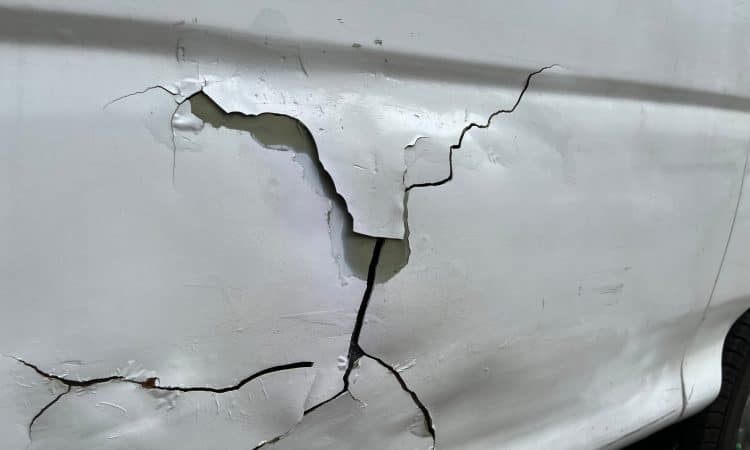
In an experiment, scientists observed how a cracked piece of metal healed itself. If this process can be fully understood and controlled, we could be at the beginning of a new era in engineering.
A team from Sandia National Laboratories and Texas A&M University – both US institutions – tested the metal’s strength, using a specialized transmission electron microscope technique to pull on the ends of the metal 200 times per second.
They then observed self-healing at ultra-small scales in a 40-nanometer-thick piece of platinum suspended in vacuum.
Cracks caused by the type of deformation described are known as fatigue damage: repeated stresses and motions that cause microscopic tears, eventually causing machinery or structures to break.
Amazingly, after about 40 minutes of observation, it began to fuse back into place and repair itself before taking off again in a different direction.
“This was absolutely stunning to watch on the ground,” materials scientist Brad Boyce of Sandia National Laboratories said when the results were announced.
The beginning of a new era in engineering
“I certainly wasn’t looking for that. What we have confirmed is that metals have their own intrinsic, natural ability to heal themselves, at least in the case of nanoscale fatigue damage.”
These are exact conditions and we don’t yet know for sure how this happens or how we can use it, he writes.
While the observation is unprecedented, it is not entirely unexpected. In 2013, Michael Demkowicz, a materials researcher at Texas A&M University, worked on a study that predicted this type of healing could occur because tiny crystalline grains inside metals essentially change their boundaries in response. to stress.
Demkowicz also worked on this study, using updated computer models to show that his ten-year-old theories about nanoscale behavior match what’s happening here.
The platinum crack began to mend
The fact that it took place at room temperature is another promising aspect of the research. Metal usually needs a lot of heat to change its shape, but the experiment was conducted in a vacuum; it remains to be seen whether the same process will occur with conventional metals in a common environment.
One possible explanation involves a process known as cold welding, which occurs at ambient temperatures whenever metal surfaces come close enough for their respective atoms to become entangled with each other.
Usually thin layers of air or contaminants interfere with the process; in environments like the vacuum of space, pure metals can be forced close enough that they literally stick together.
The research was published in

